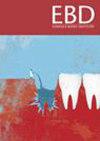Comparison of marker-based and marker-free registration techniques in dynamic navigation-guided implant surgery for fully and partially edentulous patients: A systematic review and meta-analysis
IF 2.3
Q3 Dentistry
引用次数: 0
Abstract
To compare the accuracy of marker-based and marker-free registration methods in the context of dynamic navigation guided implant surgery for patients with partial or complete tooth loss. The review includes research articles written in English and Mandarin Chinese published between January 2013 and May 2025, from databases such as MEDLINE/PubMed, Scopus, Cochrane, Embase, China National Knowledge Infrastructure (CNKI) and Web of Science. Both laboratory-based and clinical investigations were taken into account. Thirteen studies, met the specified criteria for inclusion and underwent meta-analysis. Sub-analyses were performed to compare various registration modalities. The assessment of collective evidence was conducted using the GRADE system. No statistically significant differences were observed between registration methodologies i.e; marker based and marker free. Subgroup analysis highlighted a preference for marker-based methods, specifically those utilizing U-shaped markers and bone markers, especially in the lower jaw. No notable variations were noted in terms of time efficiency. Marker-free registration was favored for outcomes reported by patients. Both marker-free and marker-based registration strategies are considered feasible options. Selection should be made based on factors such as practicality, cost, efficiency, clinician preference, and patient-reported outcomes. The results should be interpreted with caution due to the considerable variability among studies, underscoring the necessity for more consistent and dependable data. CRD42024504573.

动态导航引导全牙和部分无牙患者种植手术中基于标记和无标记注册技术的比较:一项系统综述和荟萃分析。
目的:比较基于标记和无标记的两种方法在动态导航引导种植手术中对部分或全部牙缺失患者的准确性。方法:本综述包括2013年1月至2025年5月期间发表的英文和普通话研究论文,来自MEDLINE/PubMed、Scopus、Cochrane、Embase、CNKI和Web of Science等数据库。实验室和临床调查都被考虑在内。13项研究符合指定的纳入标准并进行了荟萃分析。进行亚分析以比较各种登记方式。使用GRADE系统对集体证据进行评估。结果:两种登记方法(即;基于标记和标记免费。亚组分析强调了对基于标记的方法的偏好,特别是那些使用u形标记和骨标记的方法,特别是在下颌。在时间效率方面没有明显的变化。无标记注册对患者报告的结果更有利。结论:无标记和基于标记的注册策略都是可行的选择。应根据实用性、成本、效率、临床医生偏好和患者报告的结果等因素进行选择。由于研究之间存在相当大的可变性,因此应谨慎解释这些结果,强调需要更一致和可靠的数据。普洛斯彼罗注册号:CRD42024504573。
本文章由计算机程序翻译,如有差异,请以英文原文为准。
求助全文
约1分钟内获得全文
求助全文
来源期刊

Evidence-based dentistry
Dentistry-Dentistry (all)
CiteScore
2.50
自引率
0.00%
发文量
77
期刊介绍:
Evidence-Based Dentistry delivers the best available evidence on the latest developments in oral health. We evaluate the evidence and provide guidance concerning the value of the author''s conclusions. We keep dentistry up to date with new approaches, exploring a wide range of the latest developments through an accessible expert commentary. Original papers and relevant publications are condensed into digestible summaries, drawing attention to the current methods and findings. We are a central resource for the most cutting edge and relevant issues concerning the evidence-based approach in dentistry today. Evidence-Based Dentistry is published by Springer Nature on behalf of the British Dental Association.
 求助内容:
求助内容: 应助结果提醒方式:
应助结果提醒方式:


